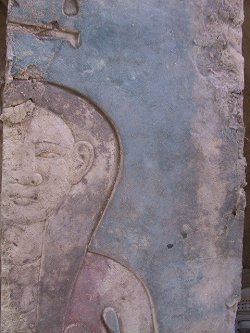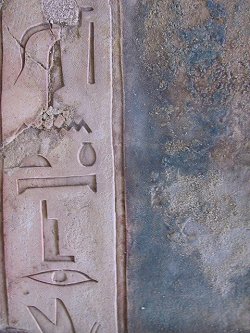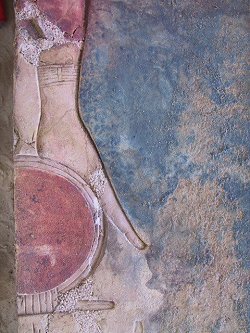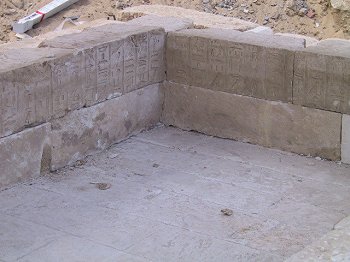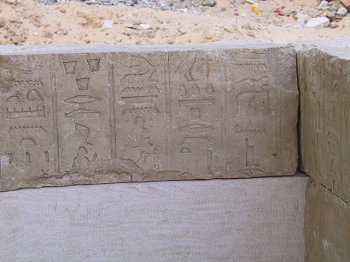New Discoveries
from the office of Dr. Zahi Hawass
News of Three Tombs – December 2001
The Discovery of the Tomb of Wadj-Hor at Heliopolis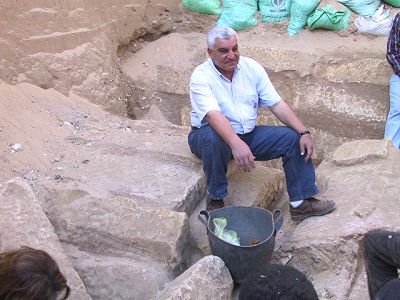
A
very interesting tomb has been found at Heliopolis in the city of Cairo. The
tomb dates to the 26th Dynasty, about 2600 years ago. The site of Heliopolis
represents the ancient town “on” called by the Greek Heliopolis. It was a
very important religious center in the pre-dynastic period. Heliopolis is the
location of the first university. It taught the prophet Joseph and many other
Greek philosophers.
The site contains many important monuments including the oldest large obelisk that
dates to the reign of Sesostris I of Dynasty 12, during the Middle Kingdom. Now,
Heliopolis is an inhabited area in the heart of Cairo. The Egyptian Antiquities
law states that anyone who owns a piece of land and is building or re-building a
house in Heliopolis must apply to the Inspectorate of the Antiquities and ask
for permission. The antiquities authority inspects the building site and
excavates the foundation of the area to see if there is archaeological evidence
there or not. The Inspectorate of Antiquities is located in the area near the
obelisk and it is under my supervision as Director of the Giza and Cairo
Monuments.
About
10 feet down, they found this tomb, they informed me about the discovery and I
immediately went and started the excavation of the tomb. The houses surrounded
us. The 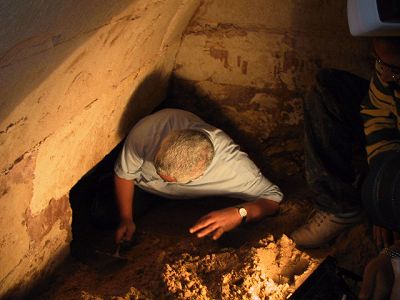 people gathered to watch, hundreds of them standing on their balconies
watching us work. They thought that we would discover a treasure. Last,
week I went to the site, I wanted to make sure that we made a sold support for
the tomb because we were afraid that the foundation of the surrounding buildings
would cave in.
people gathered to watch, hundreds of them standing on their balconies
watching us work. They thought that we would discover a treasure. Last,
week I went to the site, I wanted to make sure that we made a sold support for
the tomb because we were afraid that the foundation of the surrounding buildings
would cave in.
We
decided to enter the tomb from the top because the original entrance was hidden
under a wall of neighboring building to the west. We removed the limestone
block from the top of the middle-vaulted chamber and we made an opening about 20
cm wide. I always like to enter the tomb first. I went down carefully and
entered inside the middle burial chamber. I saw the deterioration of the wall
and the inscriptions. This deterioration was caused from sewage seeping into the
tomb. Even with the damage we were able to discover that the tomb three vaulted
chambers that open into one vaulted room. We discovered approximately 29
shawabtis statuettes in the debris. They are the statuettes that answer all the
questions that are asked of the deceased in the afterlife. The name Wadj-Hor is
written on the shawabtis statuettes, he was working in the palace. I looked
inside the third or south chamber and discovered three limestone sarcophagi. We
are still cleaning the tomb.
This
discovery is very important because it is more proof of what I have been saying,
that we never know what secrets the sand of Egypt is hiding and that we have
only found about 30% of our monuments, so we still have 70% to discover.
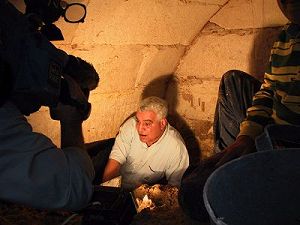 .
.
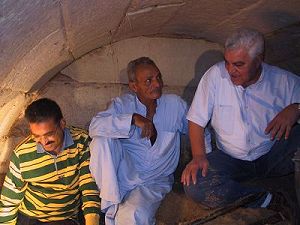
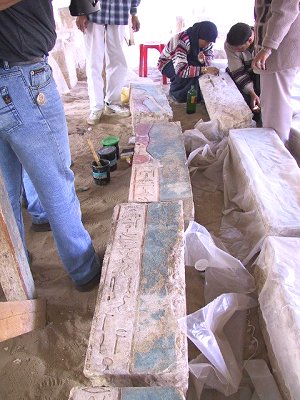 |
The Tomb of Benhsi
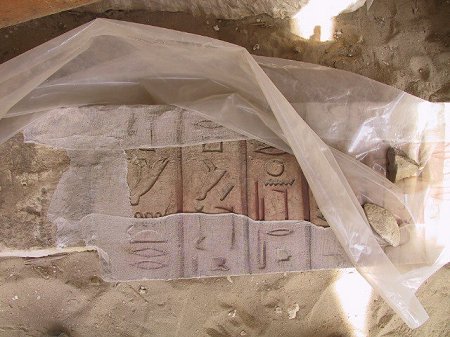
|
A
few years ago, a beautiful Tomb from the 26th Dynasty was found. The tomb is
decorated with scenes, however, the water table started to attack the tomb and
we had to save it. We made a concrete base and began to return the blocks again.
The project is a good example of conservation. The area is going to be an
open-air museum because it has a standing statue of Ramesses II.
The
Discovery of the Tomb of the Physician at Saqqara
The Tomb of Qar in Saqqara is another tomb that we recently discovered. It is
located to the south of the Step Pyramid. The tomb has a vaulted ceiling. The
inside wall depicts scenes of an ox jumping a cow and another scene shows the
deceased sitting in front of an offering table. The false door is beautifully
inscribed with the name “Qar” and his title as the “physician in the
palace”. In front of the false door is a beautiful alabaster offering table
inscribed and about 30 bronze surgical instruments. This is the first time that
these types of tools have been discovered inside a tomb. Also, outside the
tomb we found a cache of bronze statues of the gods and goddesses, such as, Ptah,
Isis, Osiris, Harpocrate, and a unique statue of the architect Imhotep. The tomb
is dated to the 6th Dynasty in the Old Kingdom but the statues date to the 26th
Dynasty in the Late Period. On the south wall of the tomb we discovered an
inscribed drum with the name of the deceased and his title. The burial shaft was
found behind the false door, it is about 60 feet deep. At the bottom of the
shaft we discovered the sarcophagus.
BACK
to The Plateau Homepage

 people gathered to watch, hundreds of them standing on their balconies
watching us work. They thought that we would discover a treasure. Last,
week I went to the site, I wanted to make sure that we made a sold support for
the tomb because we were afraid that the foundation of the surrounding buildings
would cave in.
people gathered to watch, hundreds of them standing on their balconies
watching us work. They thought that we would discover a treasure. Last,
week I went to the site, I wanted to make sure that we made a sold support for
the tomb because we were afraid that the foundation of the surrounding buildings
would cave in.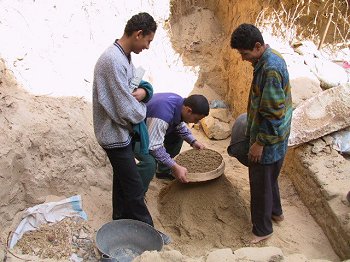
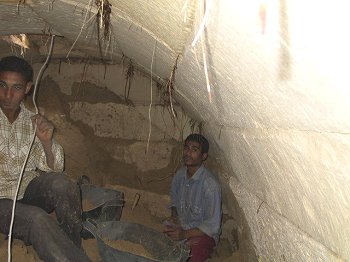
 .
.



